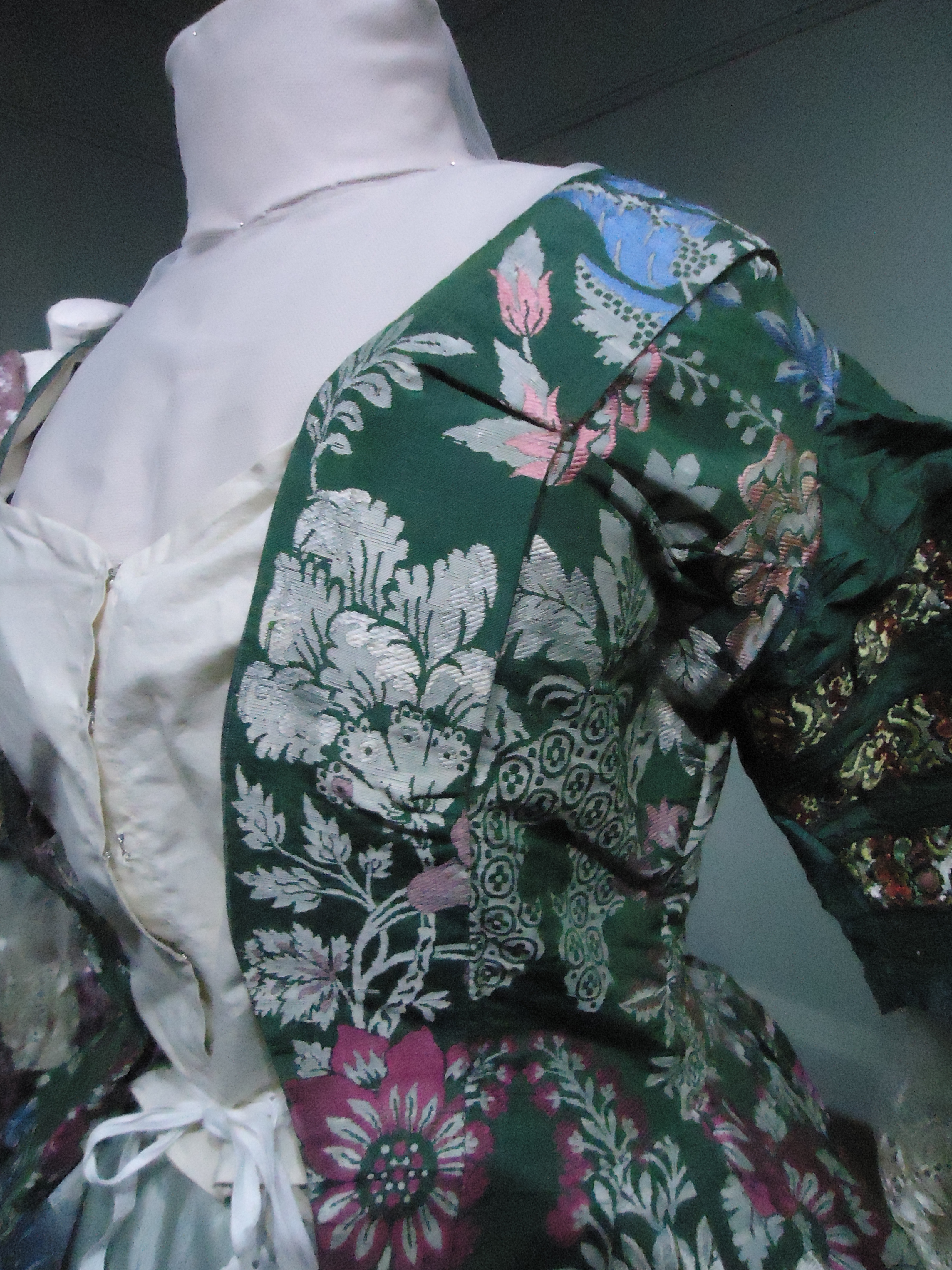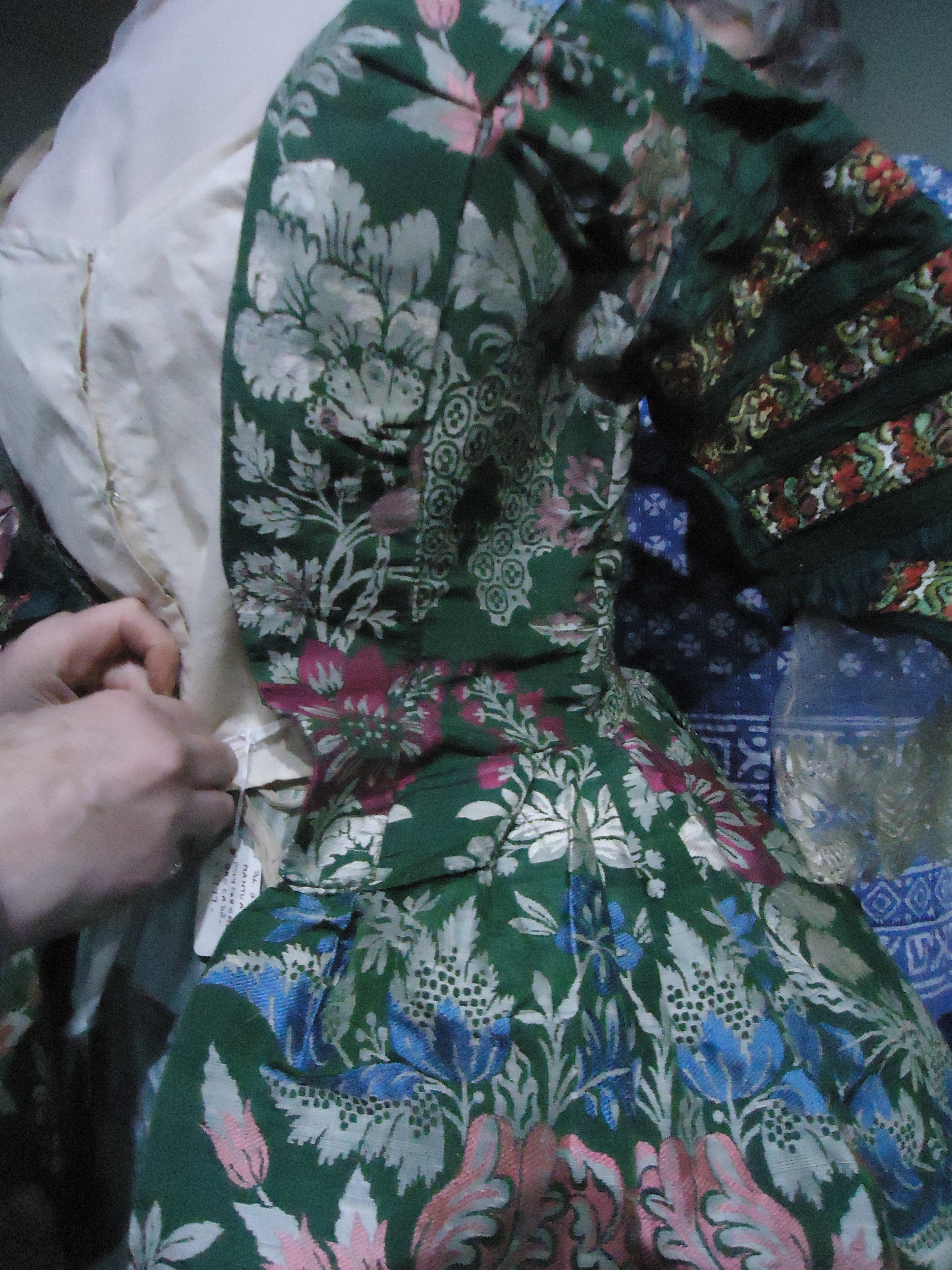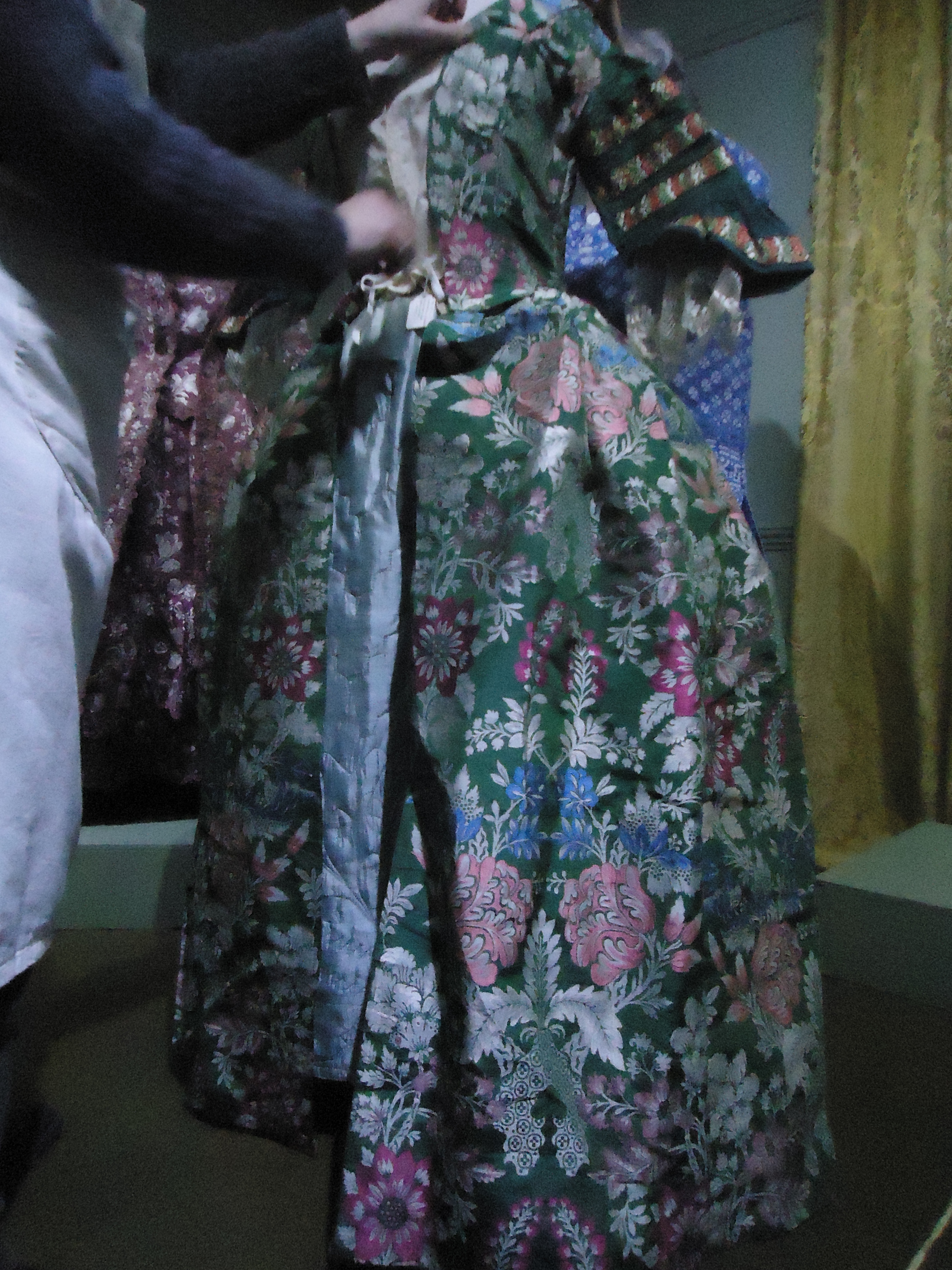Green Dutch Silk Robe a l’Anglais:
c.1770
(All Images Courtesy of the Totnes Fashion Museum)
As you can see from the above photo, the sleeves have been replaced on this garment, for whatever reason, they may have been damaged at some point over the 200 years it’s been around for. It doesn’t make this dress any less valuable at look at though.
– Robe a l’Anglais.
– Robings are broad and shaped.
– CF point of dress is wide and larger than robing.
– Skirt is flat at front and the pleating starts at almost the side seam.
– This dress doesn’t have any pockets gaps.
– Dress looks to have been altered in various places
– Tie at CB of Dress that gets tied over the stays at front.
We learnt some new things with this dress. First thing was Julia Fox explaining that the contemporary term for this type of dress was a ‘soft bodied gown’ (rather than a stiff bodied gown which would’ve been boned, for example). The other thing was the ties at the CB of the dress. These help pull the dress right in at the waistline tight over the stays.
This dress, though beautiful, seemed rather clumsy in it’s construction techniques. Neither side really seemed to match to the other and there were irregularities all over the place. It could be that these oddities were from later alterations.
– The Robings had a pleat in it that extended to the bodice.
– The pleats on the Robings didn’t seem to match with the other side.
– The shape of the Robings just seemed odd and most importantly the curve of the CF edge and part of the Robings didn’t seem conventional. Although, I’m not quite sure how that could’ve been altered to be this way.  Where would they have got the extra fabric from?
Where would they have got the extra fabric from?
– Robing didn’t match with bottom of the CF edge.
– There is also a small pinch pleat just at the side of the CF of the skirt.
Not really sure how some of these issues could’ve come from an alteration unless the CF point was longer than it currently is but it’s hard to imagine that such a rick looking silk would get made
 up so messily. Many of the other dresses which we have looked at and studied also seem to have these odd bits and it’s not impossible that they could be down to the speed in which these dresses could be made. Apparently it was not unusual for a lady to be able to order a dress to be made up for the next day. Liza Picard mentions it in her book Dr Johnson’s London and states how there was even a law passed to try and prevent this type of thing from happening as it over-worked the women. If dresses were being made up so fast I suppose it could be that mistakes were rectified.
up so messily. Many of the other dresses which we have looked at and studied also seem to have these odd bits and it’s not impossible that they could be down to the speed in which these dresses could be made. Apparently it was not unusual for a lady to be able to order a dress to be made up for the next day. Liza Picard mentions it in her book Dr Johnson’s London and states how there was even a law passed to try and prevent this type of thing from happening as it over-worked the women. If dresses were being made up so fast I suppose it could be that mistakes were rectified.
It does also appear from these photo’s that the robings were possibly secured down in places as most of the ones we’ve seen can be flapped open. Julia Fox said that this was where they hid the pins when pinning it onto the stays (another thing learnt).







